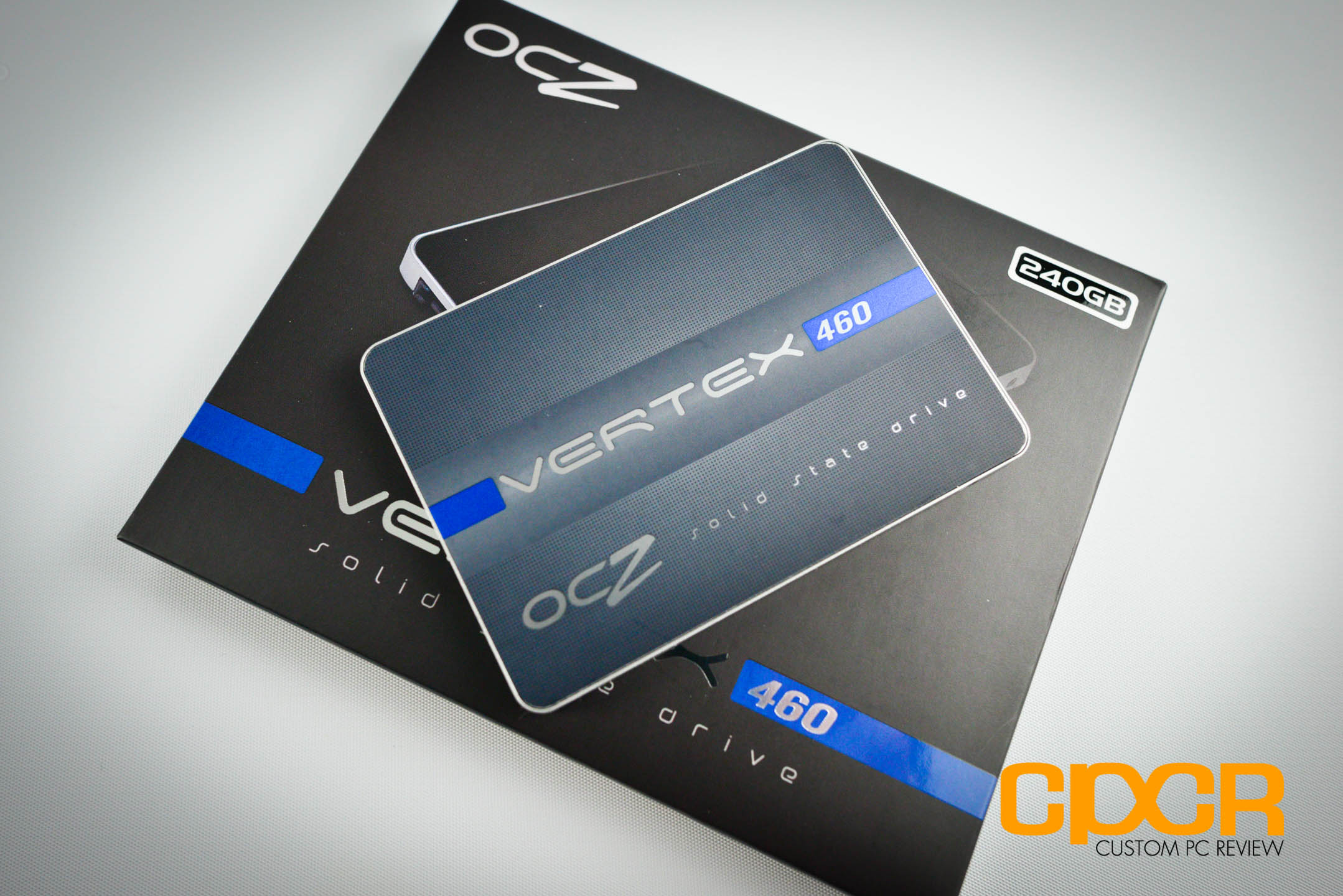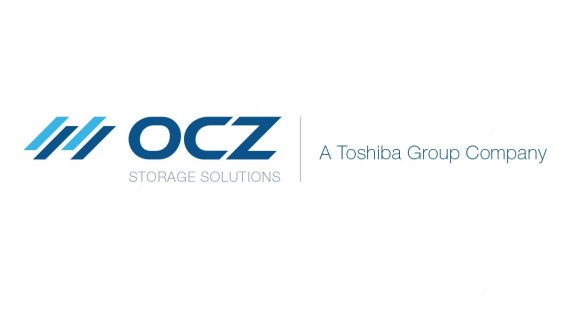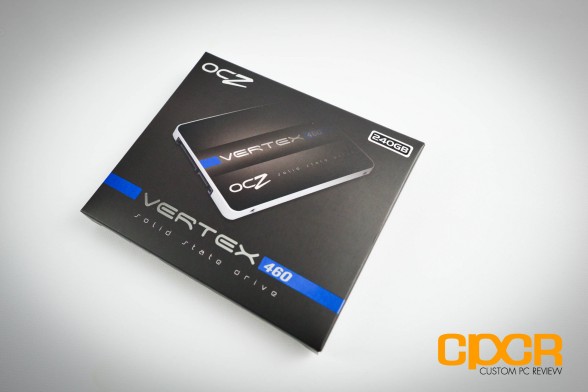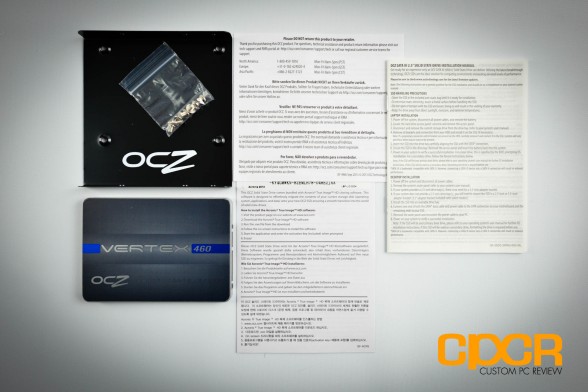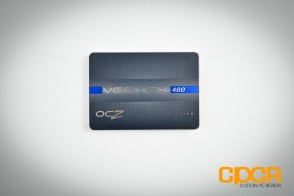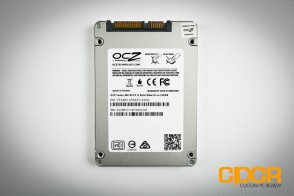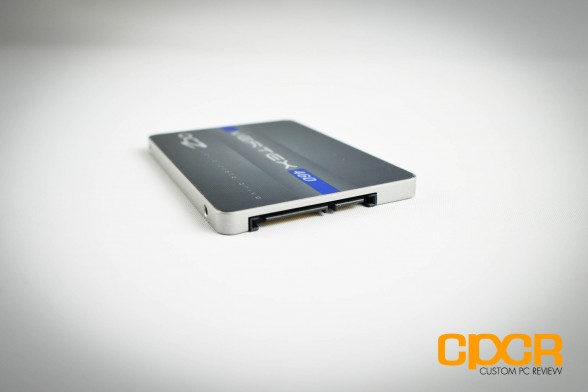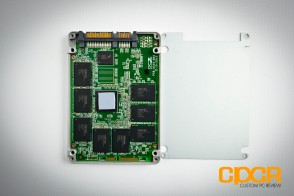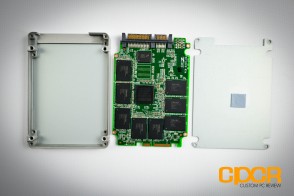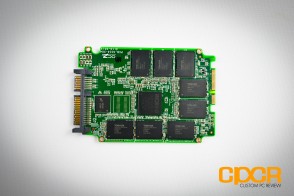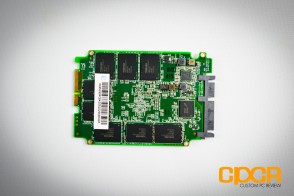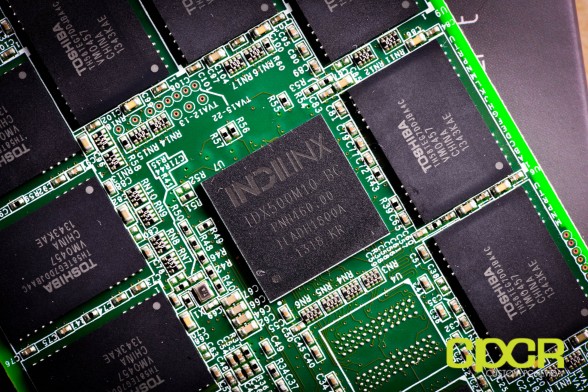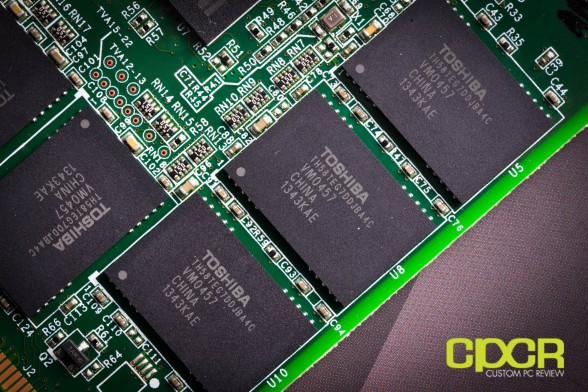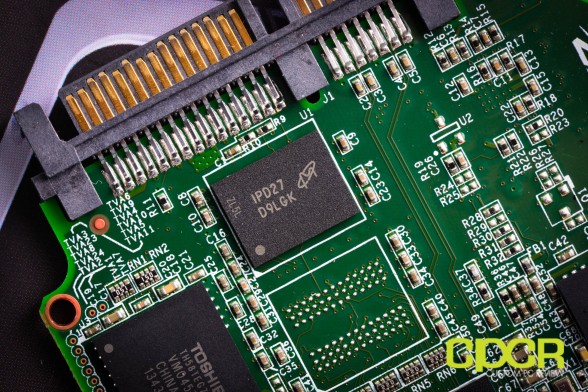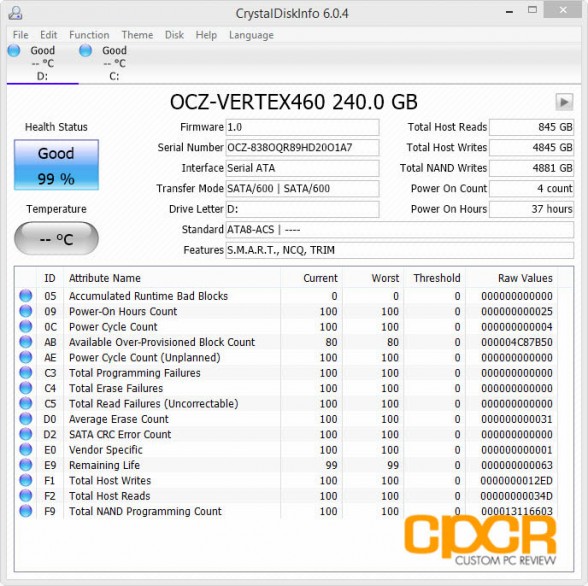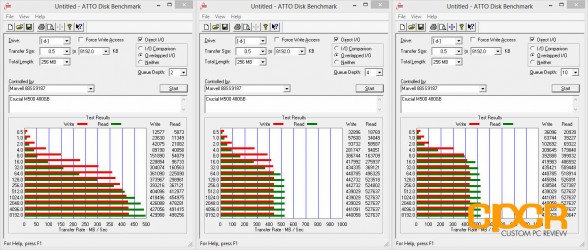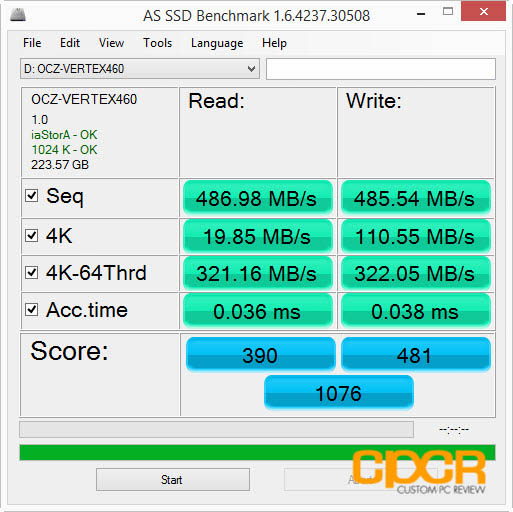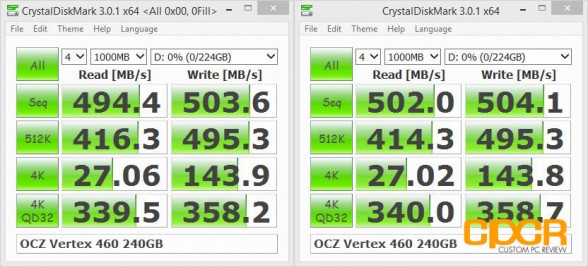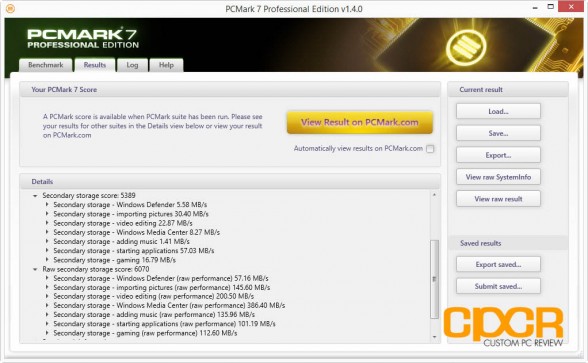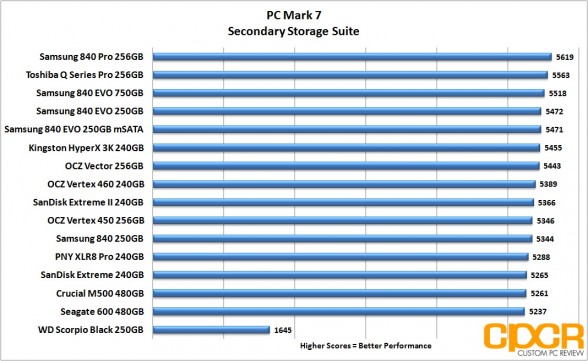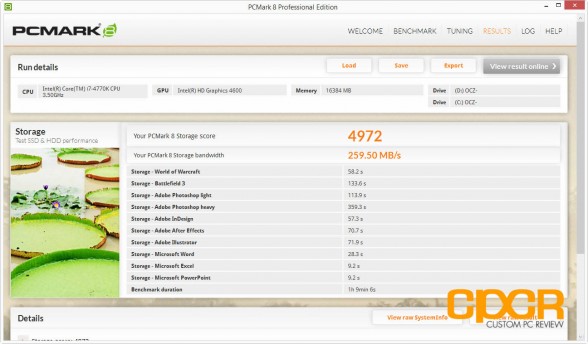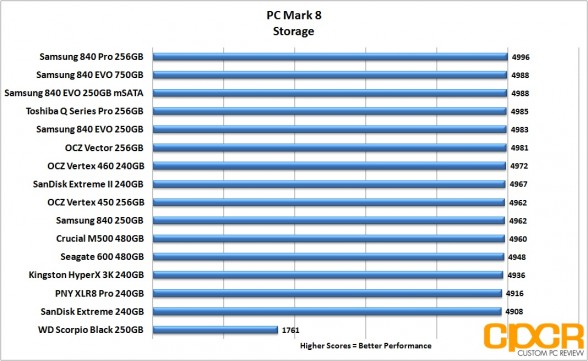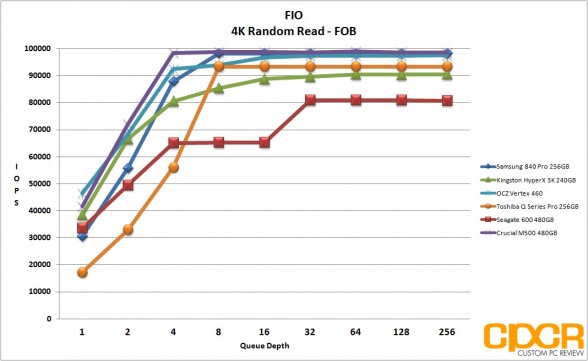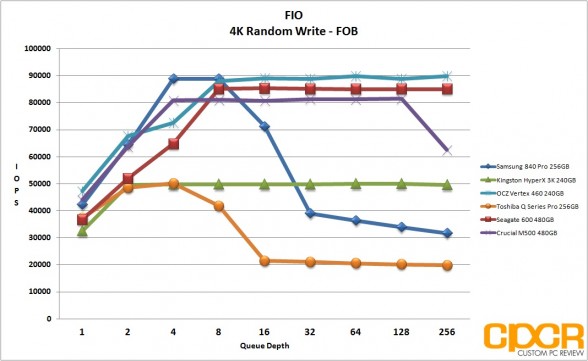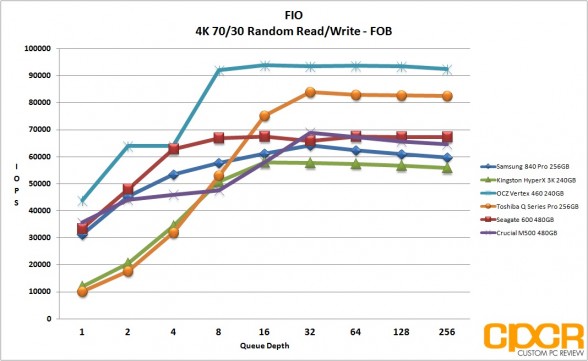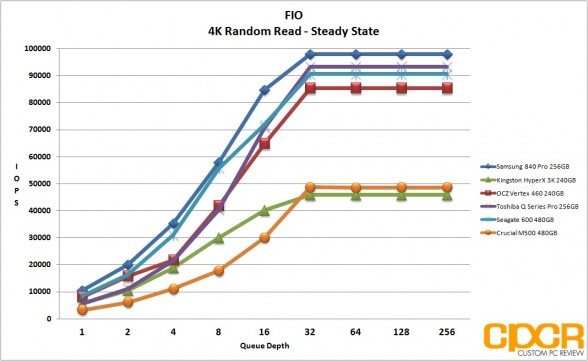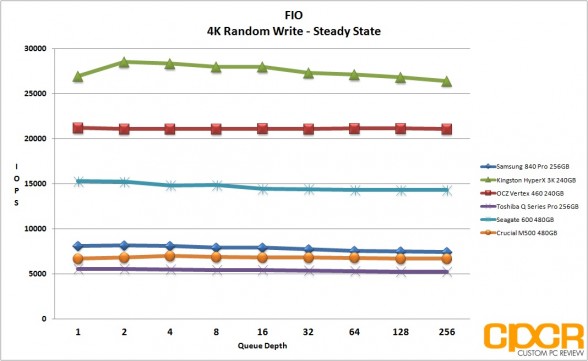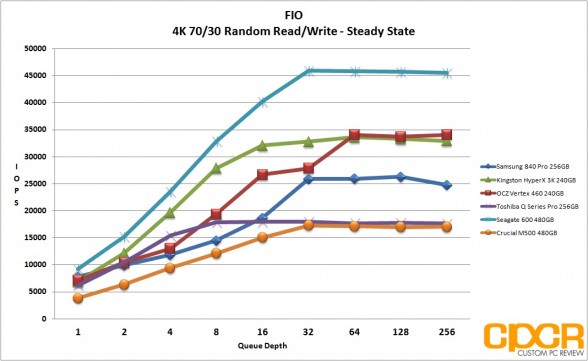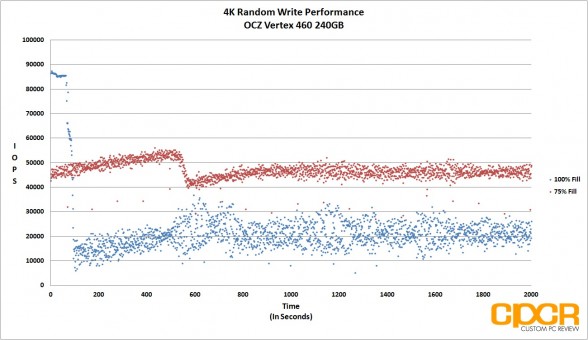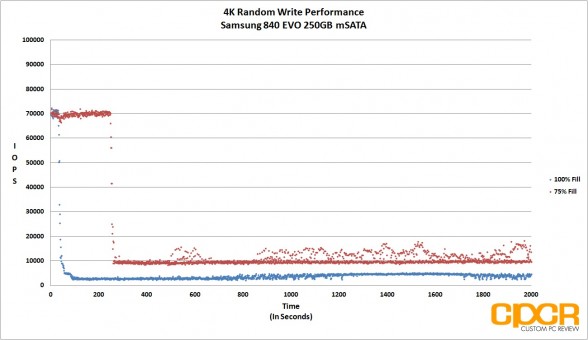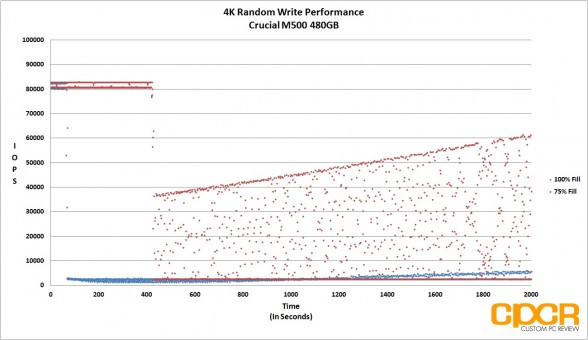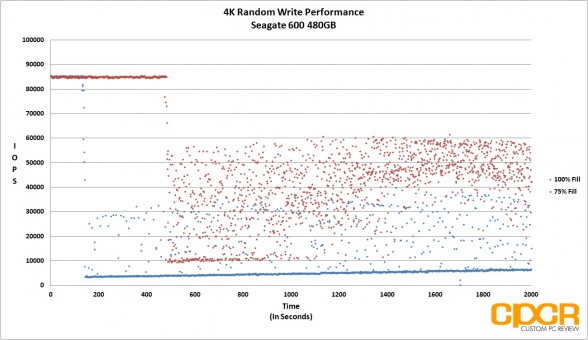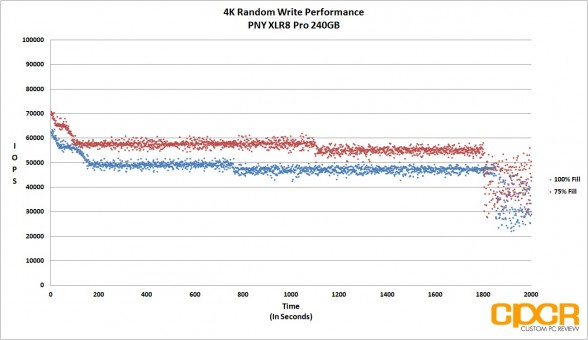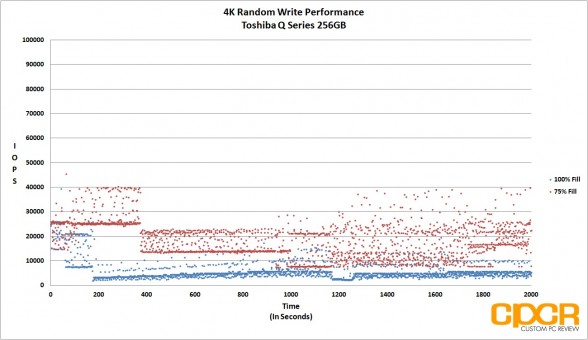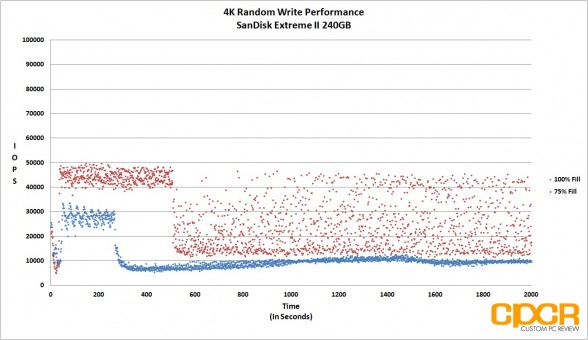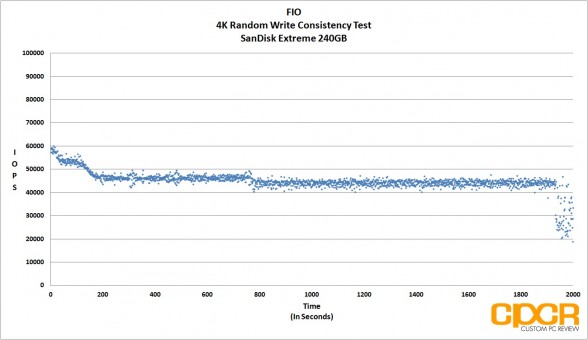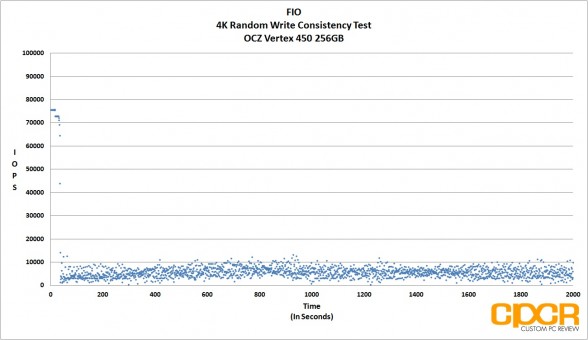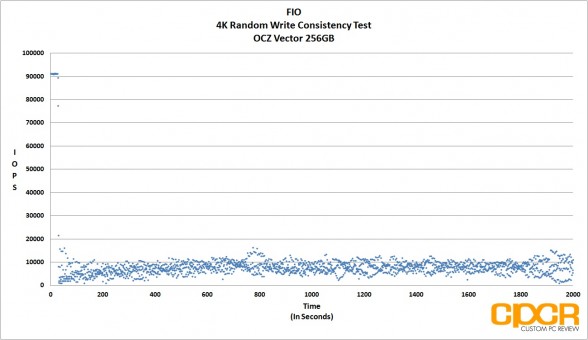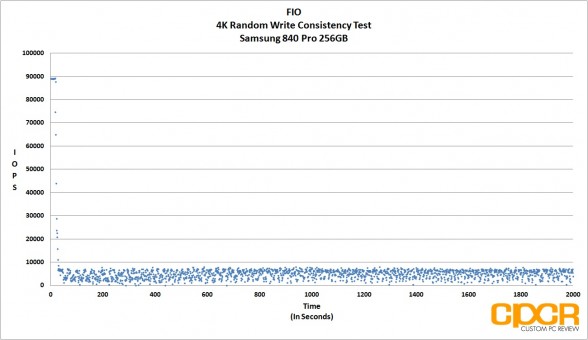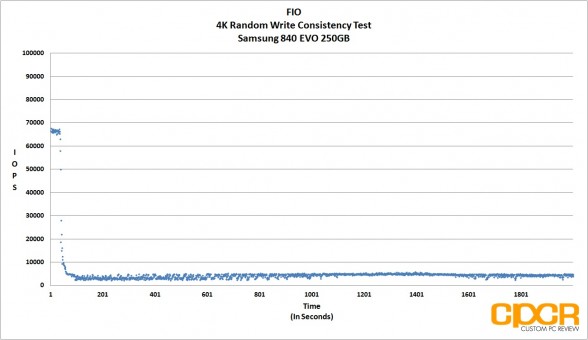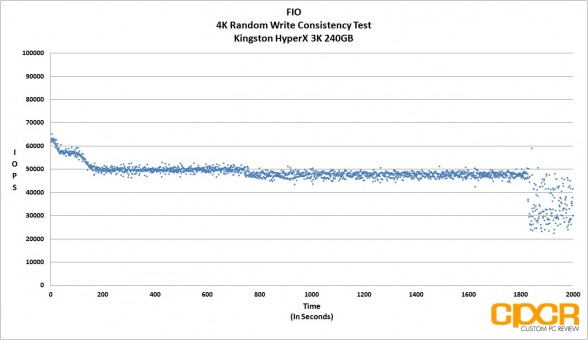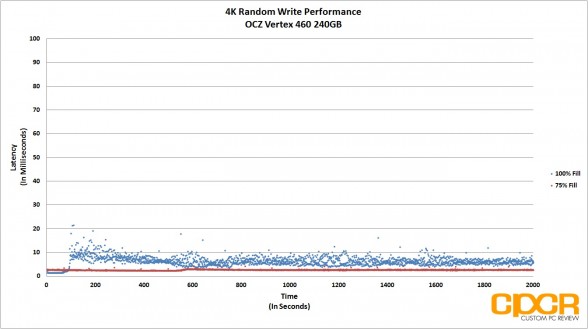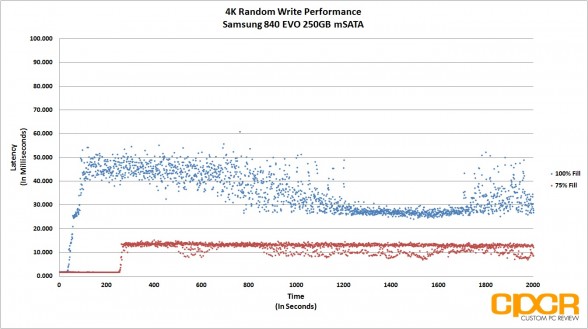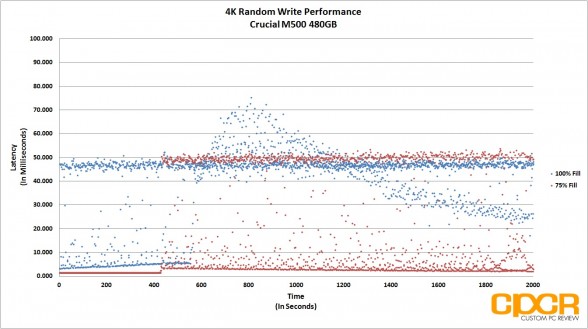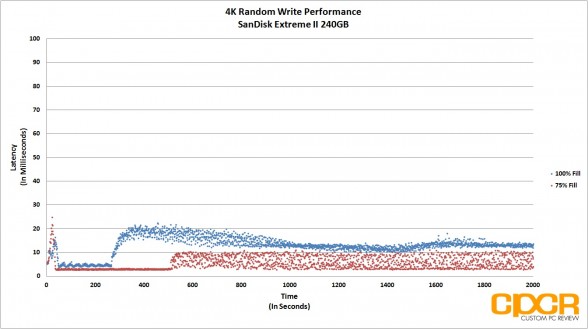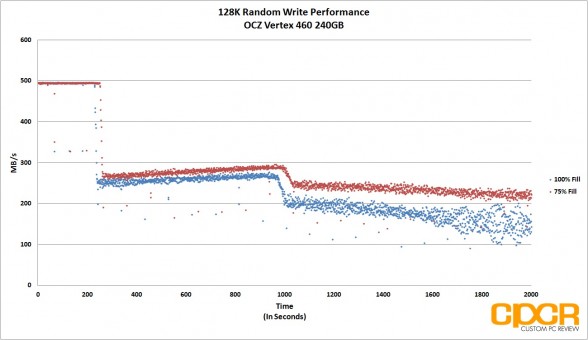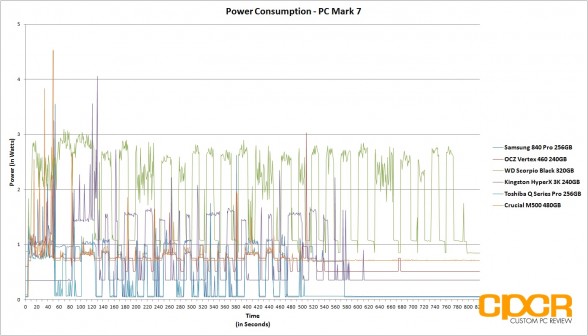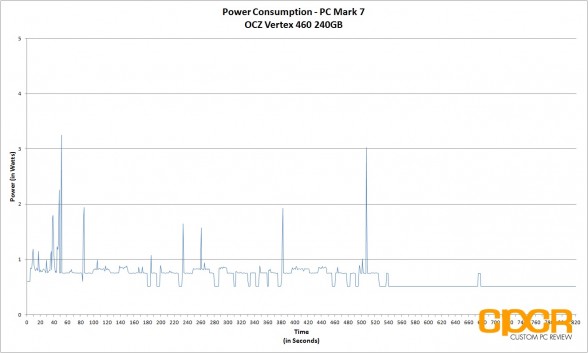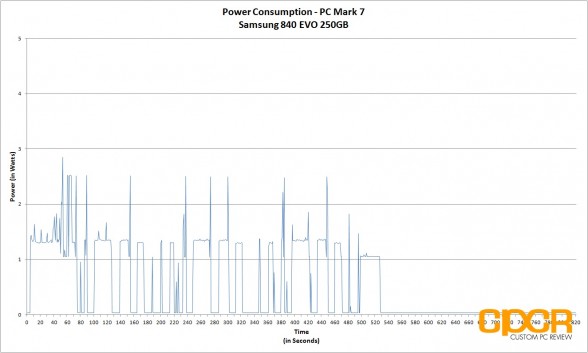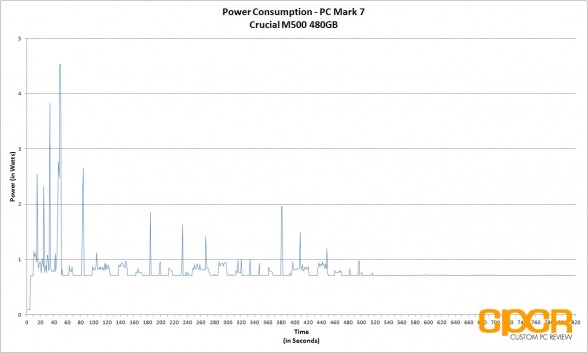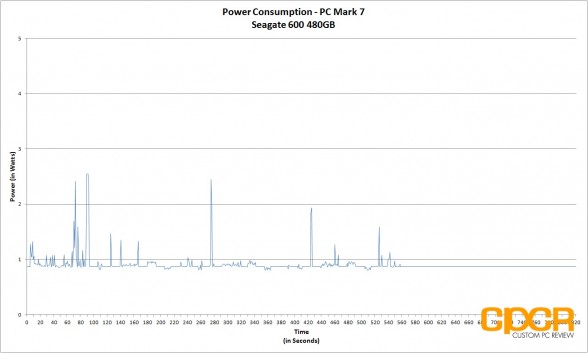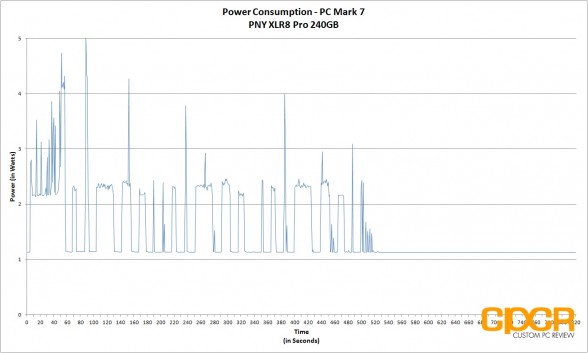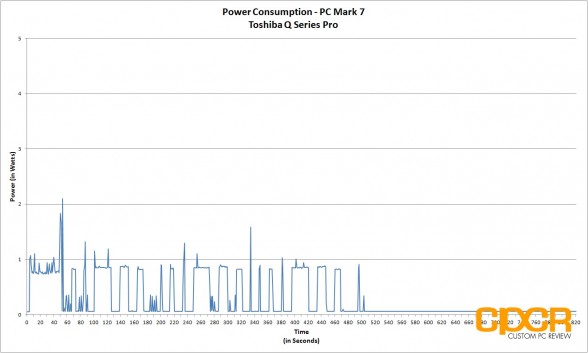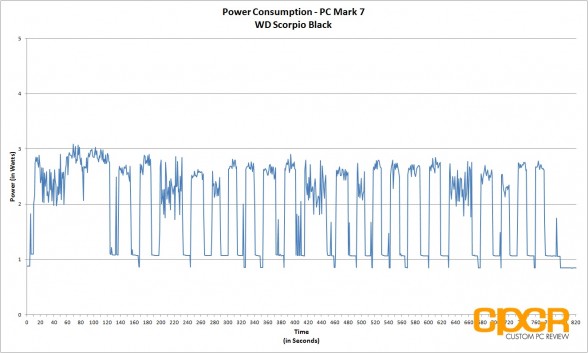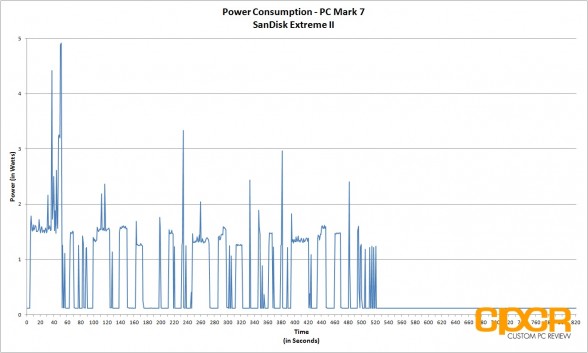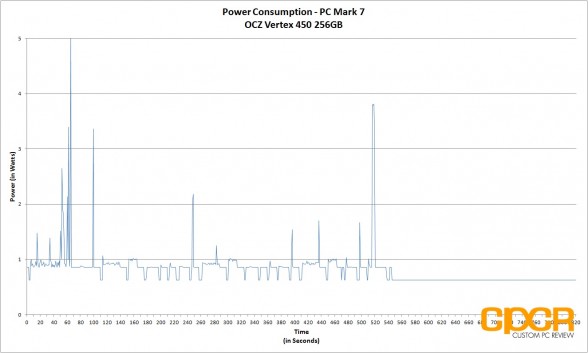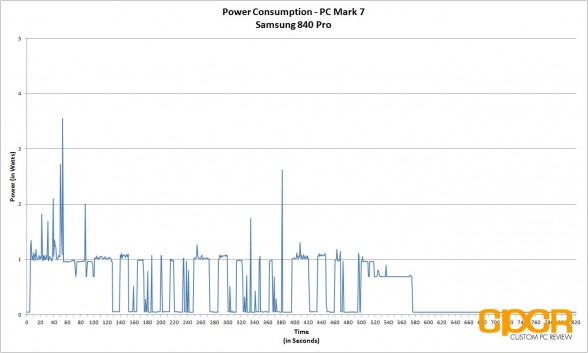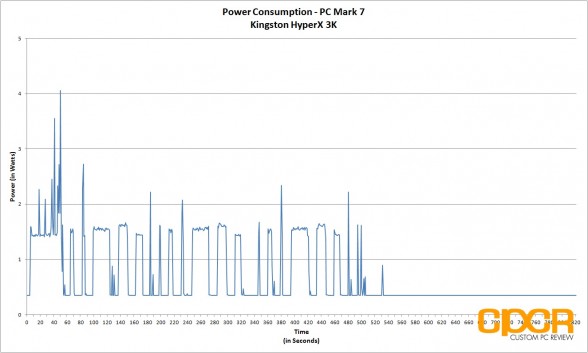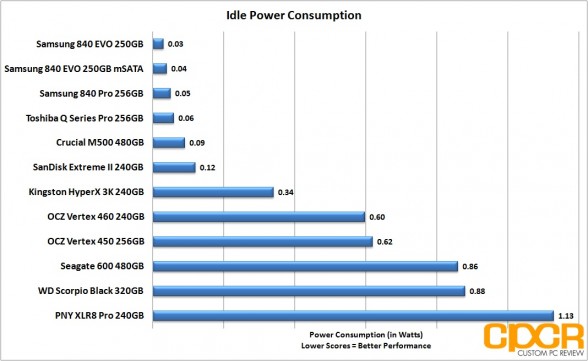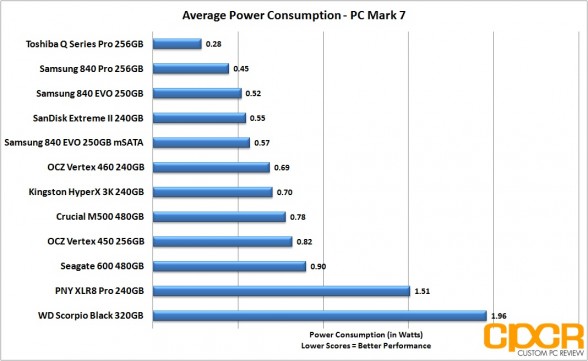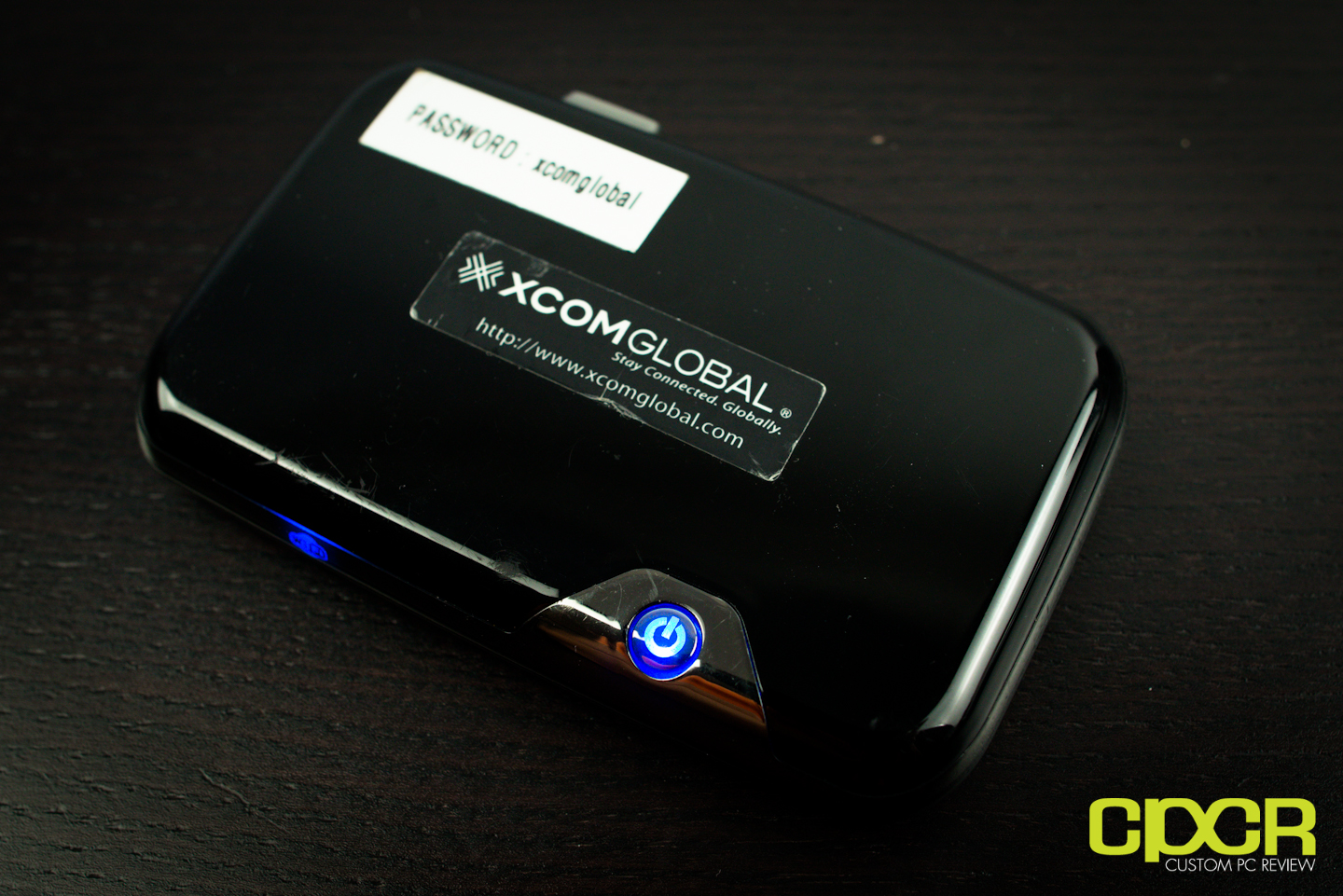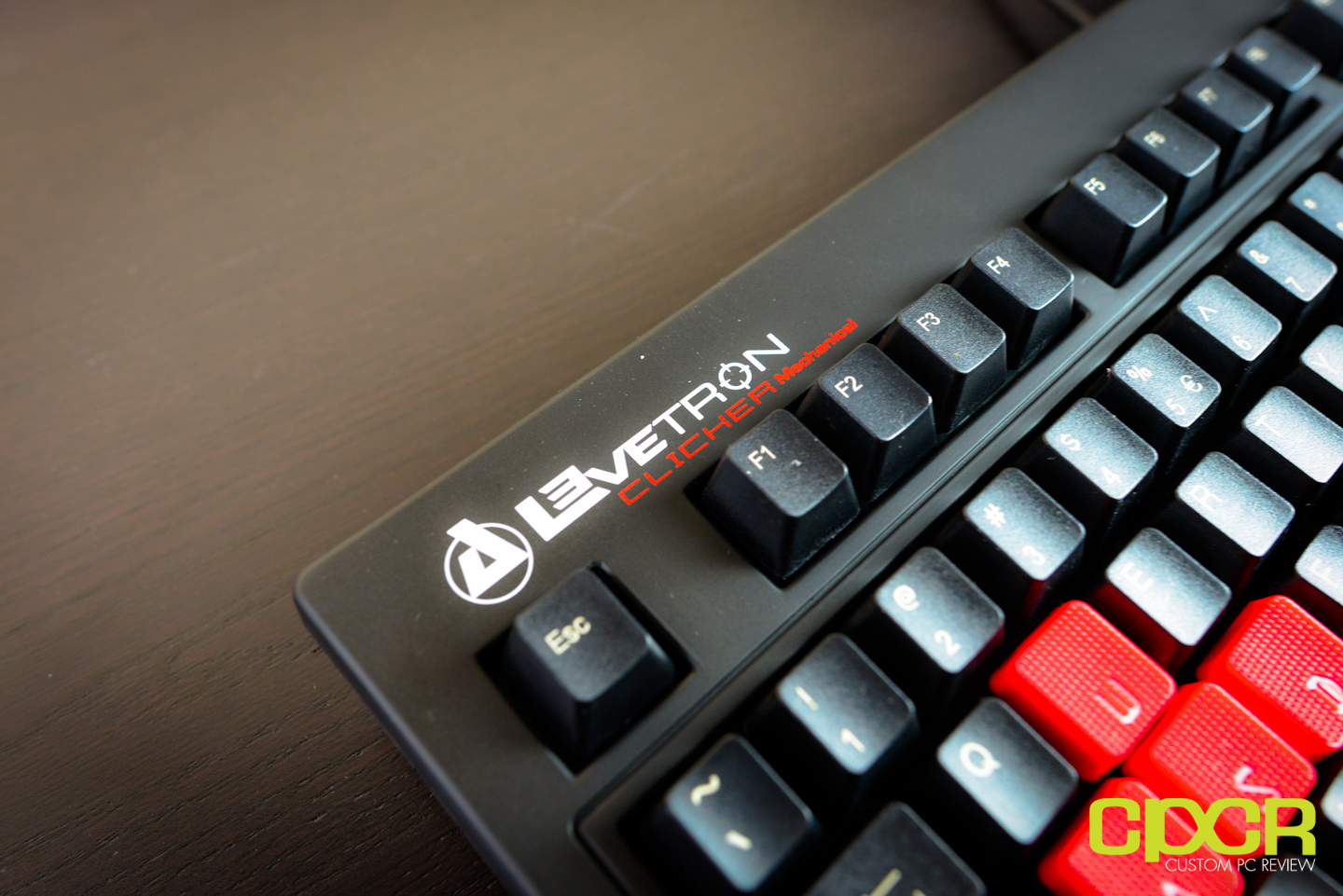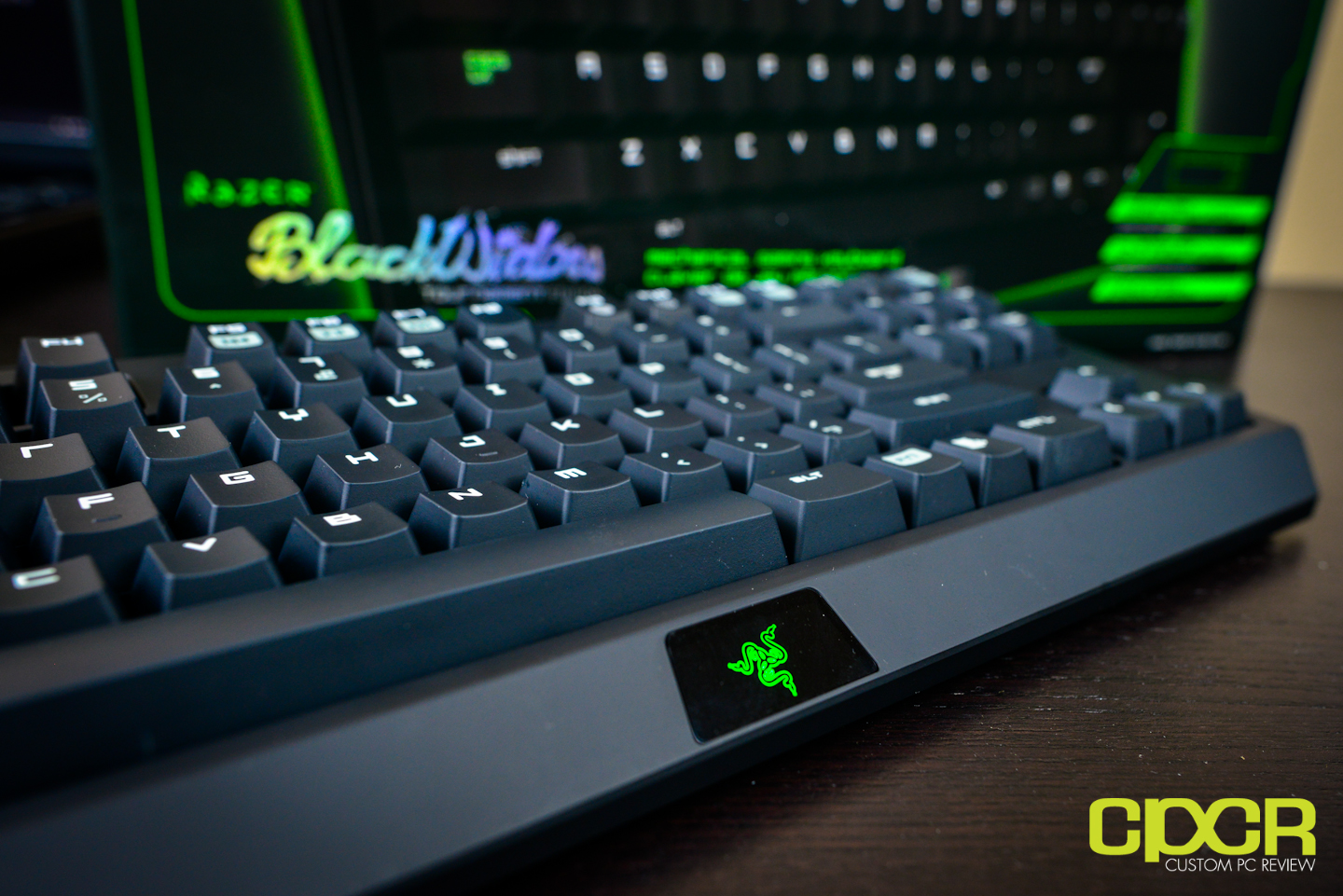[section label=1. Introduction]
New Name, New SSD. Meet the OCZ Vertex 460
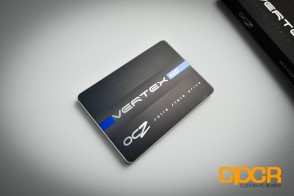 The last few months haven’t been pretty for OCZ. Late in November of last year, OCZ hit rock bottom when they filed for bankruptcy, and within the next two months, Toshiba purchased the then defunct OCZ’s assets for a paltry price of $35 million. Considering only a couple years ago, OCZ was valued at over $1 Billion, Toshiba got a pretty sweet deal for a ton of valuable IP.
The last few months haven’t been pretty for OCZ. Late in November of last year, OCZ hit rock bottom when they filed for bankruptcy, and within the next two months, Toshiba purchased the then defunct OCZ’s assets for a paltry price of $35 million. Considering only a couple years ago, OCZ was valued at over $1 Billion, Toshiba got a pretty sweet deal for a ton of valuable IP.
Following Toshiba’s acquisition, it seemed like Toshiba would be most interested in merging OCZ with their own SSD division; however, with Toshiba recently completing the OCZ acquisition, it’s been made clear that OCZ will continue to operate as a separate, autonomous entity now known as OCZ Storage Solutions, a Toshiba Group Company. Given OCZ’s strong presence in the consumer market, it seems logical that Toshiba decided to keep the OCZ branding rather than integrate OCZ and have them work on the next Toshiba HZDLMFAOLOLROFLR54684123 SSD.
At the same time OCZ transformed into OCZ Storage Solutions (which we’ll be referring to as OCZ from this point on), OCZ also released a new enthusiast class SSD, the OCZ Vertex 460, which we’ll be reviewing today.
OCZ Vertex 460 Specifications
| Manufacturer | OCZ | OCZ | OCZ |
|---|---|---|---|
| Model | Vertex 460 | Vertex 460 | Vertex 460 |
| Model Number | VTX460-25SAT3-120G | VTX460-25SAT3-240G | VTX460-25SAT3-480G |
| Form Factor | 7mm, 2.5″ SATA | 7mm, 2.5″ SATA | 7mm, 2.5″ SATA |
| Capacity | 120 GB | 240 GB | 480 GB |
| Controller | Barefoot 3 M10 | Barefoot 3 M10 | Barefoot 3 M10 |
| NAND | 19nm Toshiba Toggle Mode MLC | 19nm Toshiba Toggle Mode MLC | 19nm Toshiba Toggle Mode MLC |
| Sequential Reads | 530MB/s | 540MB/s | 545MB/s |
| Sequential Writes | 420MB/s | 525MB/s | 525MB/s |
| 4K Random Read | 80,000 IOPS | 85,000 IOPS | 95,000 IOPS |
| 4K Random Write | 90,000 IOPS | 90,000 IOPS | 90,000 IOPS |
| Interface | SATA 3 6GB/s | SATA 3 6GB/s | SATA 3 6GB/s |
| Warranty | 3 Years, 20GB/day | 3 Years, 20GB/day | 3 Years, 20GB/day |
The OCZ Vertex 460 will come in three flavors – 120GB, 240GB, and 480GB. It’ll still continue as a high performance grade SSD, but it’ll be slightly lower in performance than the flagship Vector 150. That said, performance is still rated at a blazing 545MB/s sequential reads and 525MB/s sequential writes for the 480GB model, but the 240GB which we’ll be reviewing today is slightly slower with performance up to 540MB/s sequential reads and 525MB/s sequential writes.
The Vertex 460 is using the same Barefoot 3 M10 controller from the Vertex 450; however, rather than using IMFT NAND, OCZ is now using Toshiba NAND, for obvious reasons. OCZ has also focused on improving sustained performance with the Vertex 460 by increasing the amount of overprovisioning from the standard 7% (from bits to bytes conversion) to a full SandForce style 14%. It’s becoming increasingly common to see this level of overprovisioning in all SSDs in general as enthusiast SSDs need the 7% for better long term consistency while mainstream SSDs need it for better long term reliability.
The warranty on the Vertex 460 is rated at 3 years, 20GB writes per day. For most consumer applications, I think that’s plenty, but those who feel like they need more can spend a few extra bucks on the Vector 150, which is now essentially the same product as the Vertex 460 with the exception of a higher clocked Barefoot 3 controller and a more comprehensive 5 year, 50GB writes per day warranty.
With that said, let’s take a closer look at the OCZ Vertex 460 240GB!
[section label=2. A Closer Look (Exterior)]
A Closer Look at the OCZ Vertex 460 240GB
Here’s a look at the packaging for the OCZ Vertex 460. It’s based on pretty much the same cool looking packaging as every other OCZ SSD.
Included we get the OCZ Vertex 460 itself, a 2.5″ to 3.5″ adapter with mounting screws, some documentation and a serial key for a copy of Acronis cloning software.
The design of the Vertex 460 is similar to the Vertex 450. The entire unit is encased in a fully metal enclosure and it’s pretty heavy. The top of the SSD includes a cool looking Vertex 460 graphic while the bottom includes some information about the drive. It’s interesting that OCZ’s logo here is still OCZ Technology rather than OCZ Storage Solutions. Looks like they haven’t been able to get that changed just yet.
Here’s a look at the I/O ports on the OCZ Vertex 460. We get the usual SATA Power and SATA 6Gb/s. It’s also in the 7mm form factor, which will allow it to fit in thin and light notebooks.
[section label=3. A Closer Look (Interior)]
A Closer Look at the OCZ Vertex 460 240GB
The Vertex 460 is held together by 8 screws – 4 for the back cover and 4 more for the PCB.
The PCB on the OCZ Vertex 460 240GB is packed to the brim with 16 NAND packages, 2 DRAM chips, and a controller.
Here’s a look at the Indilinx Barefoot 3 M10 controller. It’s basically the same 8-channel Barefoot 3 controller used on the OCZ Vector, but it’s clocked slightly lower for better energy efficiency and slightly lower performance. It’s the same exact controller we saw on the OCZ Vertex 450, so if you’re interested in more details about the controller, be sure to check out our review for the Vertex 450.
NAND for the Vertex 460 is now 19nm Toshiba Toggle Mode MLC rather than 20nm IMFT Synchronous NAND. The OCZ Vertex 460 240GB edition uses 16 NAND packages totaling 16GB each to produce a total capacity of 256GB. With an additional 7% over-provisioning, the drive sits at approximately 240GB.
For the DRAM buffer, OCZ is using two 2Gb (256MB) Micron DDR3-1333MHz 1.5v chips. This makes it a total of 512MB for the DRAM buffer. We generally like to see 1MB DRAM buffer to 1GB of total NAND capacity, so OCZ has included plenty here.
[section label=4. Test Setup]
Haswell Test Bench
As of October 5, 2013, we’ve upgraded our storage testing system to a Z87/Haswell testing platform. All SSDs used for comparison here have been updated to the latest firmware as of October 2013. Performance tests from storage reviews prior to that date should not be compared to our latest reviews.
| System | CyberPowerPC Gamer Xtreme 4200 |
|---|---|
| CPU | Intel Core i7 4770K |
| Motherboard | ASUS Z87-A |
| Memory | Kingston HyperX Genesis 16GB DDR3 2133MHz |
| Graphics | Intel HD4600 Graphics |
| Storage | OCZ Vertex 4 256GB |
| Power Supply | Corsair HX650 |
| Case | HSPC High Speed Tech Station |
| Optical Drive | ASUS OEM DVD Drive |
| Operating System | Windows 8 64 bit & CentOS 6.4 |
Special thanks to CyberPowerPC, Kingston, OCZ Technology and HSPC for sponsoring our test bench!
Crystal Disk Info
OCZ Vertex 460 240GB
Today’s review will be on the OCZ Vertex 460 240GB carrying the firmware v1.0. OCZ hasn’t packed the Vertex 460 with a ton of modern features, but it does have the basic SMART monitoring, TRIM, and NCQ.
On the encryption front, the Vertex 460 does have basic AES-256 bit encryption, but doesn’t include support for TCG Opal 2.0 or IEEE 1667.
[section label=5. ATTO Disk Benchmark / AS SSD / Crystal Disk Mark]
OCZ Vertex 460 240GB Performance
ATTO Disk Benchmark v2.46
ATTO Disk Benchmark is one of the industry’s oldest and most popular benchmarks for testing disk read/write speeds. This benchmarks allows read and write testing using predefined block sizes and gives us a good idea of read/write speeds with different sized files. Most SSD manufacturers these days prefer using this benchmark when advertising SSDs as it tests using compressible data, which tends to yield better performance.
Performance Analysis
The Vertex 460 240GB is rated at 540MB/s sequential reads and 525MB/s sequential writes. In ATTO Disk Benchmark, we can see that maximum performance reached was 551MB/s sequential reads and 532MB/s sequential writes, surpassing the rated specifications by a good margin.
AS SSD Benchmark
AS SSD is a very commonly used benchmark used to measure SSD performance in a number of categories. Here, tests are run using incompressible data at QD1. It also outputs a final score at the conclusion of the test based off the read and write performance of the drive.
Performance Analysis
At low queue depths, the OCZ Vertex 460 performs extremely well, matching up to the fastest SSDs on the market. 4K read performance is slightly lower than expected but 4K writes and 4K 64 writes are some of the fastest we’ve seen to date. Latencies are also extremely low as well and if latency can consistently stay at 0.04ms or lower over an extended period of time, we’ve got a great drive on our hands.
Crystal Disk Mark 3.0.1 x64
Crystal Disk Mark is another popular benchmark which allows us to measure both sequential read/write speeds as well as random read/write speeds. With this benchmark, tests can be run using both random fill (incompressible data) and 0 fill (compressible data). Realistically in typical computer usage scenarios, data being transferred will consist of a mixture of both incompressible and compressible data.
Performance Analysis
Crystal Disk Benchmark simply confirms our testing so far. For our testing, we ran it at QD4 since AS SSD already covers QD1. At higher queue depths, the Vertex 460 scales well with 4K reads improving significantly over the performance we saw at QD1.
[section label=6. PC Mark 7 / PC Mark 8]
OCZ Vertex 460 240GB Performance
PC Mark 7
The PC Mark 7 storage test evaluates the SSD under many different real world environments such as gaming, multimedia editing, etc. This closely represents the SSD’s performance under real world situations.
PC Mark 8
The PC Mark 8 storage test is similar to storage tests found in PC Mark 7. The PC Mark 8 storage test evaluates SSDs under many real world applications such as gaming, video editing, photo editing, etc. and is well regarded among the SSD industry.
Performance Analysis
In PC Mark 7/PC Mark 8, the OCZ Vertex 460 240GB comes in right in the middle of the pack just under the slightly faster OCZ Vector.
[section label=7. FIO – FOB]
OCZ Vertex 460 240GB Performance
FIO (Flexible I/O Tester)
FIO, which stands for Flexible I/O Tester, is basically what its name says – a flexible I/O tester / I/O workload generator. Whereas all the benchmarking tools we’ve used previously are fantastic, easy to use benchmarking tools that provide a good snapshot of SSD performance, they do lack a lot of versatility, especially for more complex and in-depth operations such as custom queue depths, block sizes, test run times, etc. While the testing that follows may not pertain to typical consumer usage, they do help give us a much more in-depth look at each individual product’s strengths and weaknesses when they’re pushed to the limits.
FIO – FOB (Fresh Out of the Box) Testing
When SSDs are brand new and Fresh Out of the Box, they’re generally able to perform at or outperform their advertised speeds, but unlike traditional hard drives, performance on SSDs begin to degrade over time as they become more and more used. This is because while SSDs are new, all bits on the SSD are empty, so they can instantly be programmed with data. However, once data gets programmed in, even if it’s deleted in the filesystem the actual data will still stay programmed on the NAND itself unless some sort of garbage collection routine comes in to wipe the data. Unfortunately, in order to write new data onto “dirty” NAND, the NAND needs to go first through an erase cycle to erase the old data before a program cycle can happen to program new data, which as you may imagine takes more time than just a simple program cycle. As this only happens when writing new data onto the SSD, you’ll generally see less performance degradation on reads and more performance degradation on writes.
For our FOB testing, we run a secure erase on the SSD then run each test sans any preconditioning. This will provide us with the highest level of performance the SSD is capable of and is likely never to be seen ever again once the SSD goes into a used state.
Our testing will include 4K read testing, 4K write testing, and 4K 70/30 read/write mix testing at queue depths of 1,2,4,8,16,32,64,128,256. The reason we’ve also included 4K 70/30 read/write mix testing is simply because most real world workloads will always fall somewhere between 0% write and 100% write rather than one or the other. Since client usage is much more read heavy, we’ll be using the 70/30 read/write mix.
For general client usage, performance will fall somewhere between queue depths of 1-4 whereas servers and other enterprise applications will easily see queue depths of 32 or greater.
Performance Analysis
Fresh out of the box, the OCZ Vertex 460 240GB is very impressive. It’s capable of delivering nearly 98,000 read IOPS and 90,000 write IOPS, which makes it one of the fastest drives we’ve tested to date – when it’s fresh out of the box. In addition to this, OCZ has also tweaked mixed workload performance in both high and low queue depth scenarios beating out every drive tested today.
[section label=8. FIO – Steady State]
OCZ Vertex 460 240GB Performance
FIO – Steady State Testing
After prolonged use of an SSD, it will reach “steady state” where performance levels off to a minimum level. The FOB state is the “best case scenario” for SSD performance while “steady state” is going to be your worst. Here, we ran the exact same set of benchmarks we just completed in the FOB state; except this time around, we’ll be preconditioning the drive by filling 100% of the drive’s LBAs with two sequential passes of 128k data followed by hammering the drive for six hours with 4K random data prior to actual testing.
Performance Analysis
In steady state, the OCZ Vertex 460 is surprisingly good, especially in write intensive scenarios. 4K random reads unfortunately drop to about 85,000 IOPS, which is slightly slower than some of its competitors, but OCZ makes up for that in random writes as it’s capable of holding 21,000 IOPS in all queue depths. The only drive to exceed this level of performance is of course the SandForce drives which seem to work extremely well in steady state. Mixed workload performance was fantastic on the OCZ Vertex 460 as well, especially in higher queue depths where it’s beaten only by the more enterprise oriented Seagate 600.
[section label=”9. FIO – 4K Random Write Consistency”]
OCZ Vertex 460 240GB Performance
FIO 4K Random Write Consistency Testing
Another one of the benefits of testing with FIO is the flexibility of running consistency tests, which is one of the most important metrics when considering SSDs going forward. Looking at the results of our benchmarks such as ATTO Disk Benchmark and Crystal Disk Benchmark, we can see that practically every top tier SSD is capable of saturating SATA 6Gb/s in the FOB state. However, what really differentiates these SSDs is their ability to hold a certain level of performance even after extended periods of use.
For our consistency testing, we used a fairly standard method, which includes both filling up 75% of capacity (consumer use) as well as 100% capacity(enterprise use) twice with sequential 128k data followed by the actual test itself, which is simply running 4K random writes at a queue depth of 32. By recording the IOPS every second for 2,000 seconds, we’re able to get a good look at what kind of performance can be expected when the drive is relatively new, when it’s heading towards steady state, and when it’s actually in steady state.
[tabgroup]
[/tabgroup]Performance Analysis
4K performance consistency is decent, but it’s definitely not the best we’ve seen. Performance with the drive filled up to capacity range from 10,000 IOPS all the way up to 30,000 IOPS which could use some work. On the flip side, when the drive is only filled up to 75% of total capacity leaving additional space for garbage collection, performance shoots up to a very respectable the 40,000 – 50,000 IOPS range with much tighter consistency.
[section label=”10. FIO – 4K Random Write Latency”]
OCZ Vertex 460 240GB Performance
FIO 4K Random Write Latency Testing
Another metric that’s becoming increasingly important in SSDs is its ability to keep latency low despite being subjected to a heavy workload. Even if a SSD were capable of ultra high and ultra consistent IOPS performance, if latency were high, users would still feel that the drive is slow. Ideally, SATA SSDs should always be capable of latencies under 50ms, even during heavy workloads.
For latency testing, we’ll be using the exact same testing parameters as IOPS consistency testing, except instead of recording IOPS every second, we’ll be recording latency.
[tabgroup]
[/tabgroup]Performance Analysis
The Vertex 460 performed extremely well in keeping latencies low with latencies never exceeding 30ms in our testing. With the drive at 75% capacity, the Vertex 460 was able to keep itself under 4ms, which is something that even the SanDisk Extreme II wasn’t able to do after all LBAs were filled to capacity.
[section label=”11. FIO – 128K Random Write”]
OCZ Vertex 460 240GB Performance
FIO 128K Random Write Consistency Testing
In addition to testing 4K random write consistency, we’ll also begin to test for 128K random write consistency to see how well a SSD is able to hold itself to a level of performance when getting hammered with larger file transfers.
For 128K random write consistency testing, we won’t be preconditioning the drive with two sequential passes of 128K data like in our 4K random write consistency testing since 128K data can easily fill up the drive well within our 2,000 second run.
Performance Analysis
Since this is a new test we’re conducting, we don’t have any other drives to compare against the OCZ Vertex 460. That said, the Vertex 460 is fairly consistent with 128K data at least in the short term. After continuously hammering the drive with 100% of the LBAs filled with data, performance drops as low as 100MB/s. With the drive at 75% fill, the situation is much better as the drive hovers at around the low 200MB/s range at its lowest level.
[section label=12. Power Consumption]
OCZ Vertex 460 240GB Power Consumption
Previously, our power consumption analysis only tested for idle and maximum load power consumption, but we felt that this was a bad way to accurately measure power consumption. The reason for this is because SSDs tend to be bursty while in operation and will spike in power usage, but only for very short periods of time. As such, many of our SSDs appeared to have even higher power consumption than traditional hard drives, which is untrue.
In order to improve our reading of power consumption, our solution was to run a test closer to the real-world and record a trace on the power consumption during testing. Since PC Mark 7 has been recognized by the industry as a fantastic real-world benchmark, we’ll be running our power consumption test while running the benchmark.
All tests below are measured by tapping our calibrated B&K Precision 5491B Bench Multimeter tapped directly into the 5v line running from the power supply to the drive. All testing here is conducted with “HIPM (Host Initiated Power Management)/DIPM (Device Initiated Power Management)” enabled and “AHCI Link Power Management – Adaptive” set to 0 milliseconds for maximum power efficiency.
[tabgroup]
[/tabgroup]Performance Analysis
Low power consumption was never the Indilinx Barefoot 3’s strong suit, and it’s pretty much the same this time around. At idle, the OCZ Vertex 460 240GB draws 0.60w, which is significantly higher than any of the Samsung or Marvell controlled SSDs we’ve tested today. Given that general consumer use of SSDs will see the SSD in idle state in over 90% of the time, it’s really something OCZ needs to work on to stay competitive in the mobile market. Average power consumption on the other hand is decent, although it’s still slightly higher than its Samsung controlled competitors.
Unfortunately, the OCZ Vertex 460 does not support DevSleep or any special low power modes.
[section label=13. Conclusion]
OCZ Vertex 460 240GB Conclusions
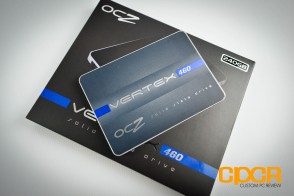 OCZ’s Vertex 460 isn’t necessarily a new product that OCZ needed in their lineup, but it’s more of a release that’s necessary due to the Toshiba acquisition. Vertex SSDs in the past have always used IMFT NAND and with Toshiba now being able to offer OCZ a low cost, stable source of high quality NAND, there’s no way OCZ would continue sourcing from IMFT even if Toshiba gave the go ahead.
OCZ’s Vertex 460 isn’t necessarily a new product that OCZ needed in their lineup, but it’s more of a release that’s necessary due to the Toshiba acquisition. Vertex SSDs in the past have always used IMFT NAND and with Toshiba now being able to offer OCZ a low cost, stable source of high quality NAND, there’s no way OCZ would continue sourcing from IMFT even if Toshiba gave the go ahead.
OCZ’s Vertex series SSDs have always been high performance, enthusiast class products and the Vertex 460 will continue the trend. In our testing, maximum sequential performance topped out at 551MB/s sequential reads and 532MB/s sequential writes, which is pretty much the limit on the SATA 6Gb/s spec until we start seeing PCIe x2/x4 based SSDs start trickling out on the market sometime in Q3/Q4.
Random read/write performance is on the Vertex 460 is fantastic as well with the drive maxing out at 90,000 4K read/write IOPS. It’s also a great thing to see OCZ overprovision the Vertex 460 to the same 14% as the Vector 150. While doing so sacrifices a bit of disk capacity, it improves performance consistency substantially, which in turn improves user experience in the long run.
The Indilinx Barefoot 3 controller is no doubt superior in the performance department, but one major thing that needs to be worked on is idle power consumption. While it’s still competitive against hard drives, Barefoot 3 controlled SSDs tend to draw a lot more power than what’s required of its competitors in an idle state. For desktop users, this isn’t a big problem, but those looking to use the Vertex 460 in a notebook or tablet may find the extra 0.5w a significant enough drain on battery life to check out alternate SSDs such as the Samsung’s 840 series, Toshiba’s Q Series Pro, or SanDisk’s Extreme II.
| Manufacturer | OCZ | OCZ | OCZ |
|---|---|---|---|
| Model | Vertex 460 | Vertex 460 | Vertex 460 |
| Capacity | 120 GB | 240 GB | 480 GB |
| Street Price | $99.99 | $189.99 | $359.99 |
| Price/GB | $0.83 | $0.79 | $0.75 |
| Check Price | Click Here | Click Here | Click Here |
MSRP on the OCZ Vertex 460 240GB is $189.99, which translates to about $0.79/GB. It’s a lot cheaper than the $1/GB the Vertex 450 originally debuted at, but I think from a pricing standpoint, OCZ really needs to position the Vertex 460 as more of a mainstream product. OCZ already has the high end, enthusiast market covered with the Vector 150, so positioning the Vertex 460 in the same space just doesn’t make all that much sense to me.
Instead, I think OCZ needs to be competitive with other mainstream SSDs on the market which means offering a quality SSD at the $0.60-$0.70/GB or lower price range. With the introduction of Samsung’s 840 EVO, I think we’ve seen a huge response from the market in that there are a lot of consumers who aren’t overly interested in having the fastest SSD out there, but instead want an affordable, reliable, yet decently fast performing SSD. If that’s something the Toshiba/OCZ partnership can provide with the Vertex series (or a brand new series down the line), they could really give Samsung a run for the money.
Overall I think the Vertex 460 is a fantastic SSD with top notch performance that’s capable of going head to head with the fastest SSDs on the market. With the future of the company no longer in question, I wouldn’t hesitate to recommend it given that the price is right.
Sample provided by: OCZ Storage Solutions
Available at: Amazon

